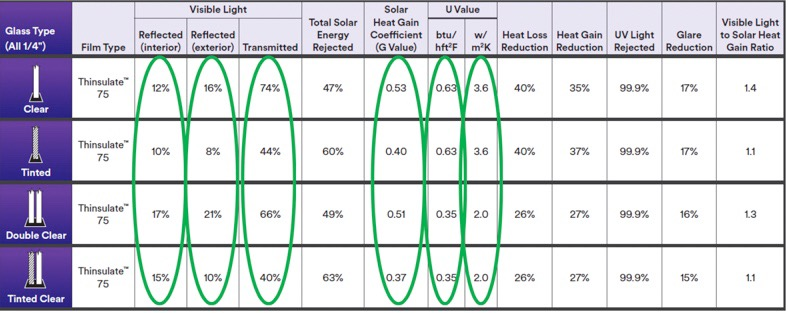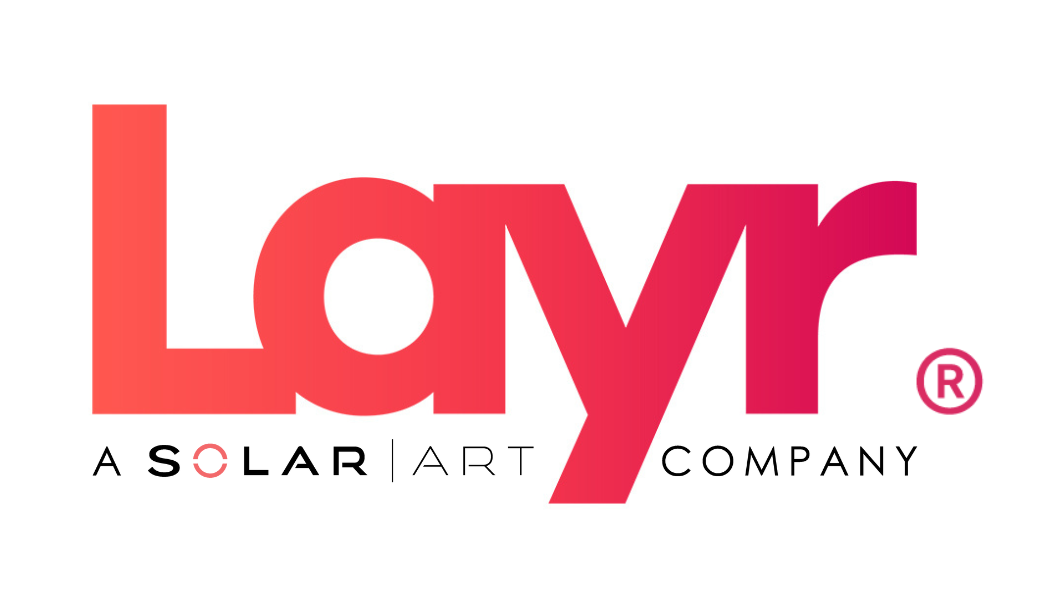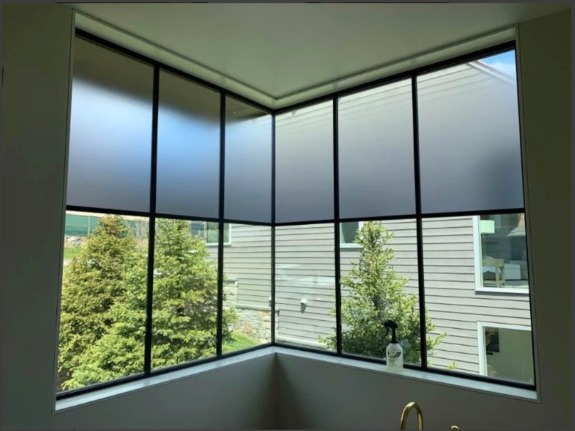
Property owners and managers are inundated with performance data, between trades, divisions, manufacturers and sales reps. Especially when dealing with a primarily retrofit product like window film, there are so many details and numbers – the selection and specification process can get overwhelming. How can we simplify the process and focus on what really matters: PERFORMANCE and AESTHETICS?
We have sold and installed thousands of projects across the Northeast and are here to help. While any commercial purchase of performance window film should go through a rigorous submittal, mock-up and review process, let us help to simplify the specification and purchasing process, and focus on the five key factors which can describe any type of window film.
- Visible Light Transmission (VLT) – visible light transmission, as you guessed, is a measure of how much natural sunlight a window lets in. If you had a hole in your wall (no window), this number would be 1.0. Most clear glazing has a VLT of ~0.8 to 0.9, or very light. Films are often defined by their VLT; a high-performance dark film may have a VLT of 0.25 to 0.40. A lighter, architectural film designed to block UV and infrared light, while maximizing visible light, may have a VLT of 0.6 to 0.7. A client’s decision to purchase darker or lighter film is related to both performance and aesthetics; maximizing heat, glare and fade reduction while also keeping natural sunlight plentiful. There are no one-size fits all answers here!!! We will walk you through the process, with samples and mock-ups, to help you find the best product and fit for you.
- Interior Reflectivity – all glass has a baseline level of reflectivity; films can either maintain or increase that level of reflectivity, depending on needs and circumstances. Many clients want low interior reflectivity, which would be ~10/15%, or about in-line with baseline clear glazing. Some clients want high interior reflectivity, to create a mirrored aesthetic. The most important point around interior reflectivity comes into play at night: if it is dark outside, and you have lights on inside, you will create a one-way mirror and not be able to see out.
- Exterior Reflectivity – exterior reflectivity speaks to how the film will look on the outside of your building. Dark, reflective films are extremely energy efficient and attractively priced – these films will create a mirrored look on the exterior of your building and provide one-way privacy during the day.
- Solar Heat Gain Coefficient – the Solar Heat Gain Coefficient (SHGC) is a measure of energy efficiency, also the inverse of the Total Solar Energy Rejected (TSER). The easiest way to think about this number is that if you had a hole in your building, the SHGC would be 1.0, you are feeling 100% of the sun’s energy (UV / visible / infrared heat). Most clear glazing has a SHGC of 0.8 to 0.9. Window film reduces the glazing unit’s solar heat gain coefficient, by either reflecting and / or absorbing solar energy. How much improvement? That depends on a number of points; the baseline glazing unit (single or double or triple-paned, coating, spacer units and infill, etc…). Most clients want a 30/40/50% improvement in the TSER, bringing the pro forma SHGC down to 0.4 to 0.5.
- U-Value – U-Value speaks to emissivity and insulation; how different materials help to stop heat transfer. U-Value is relevant for colder climates; we are seeking to improve insulation and control heat loss during the winter. Similar to the SHGC, U-Value is expressed in numeric form with a baseline of 1.0; lower is better. Certain specialty window films work to reject far-infrared heat back into a building during the winter, through the use of specialty metals and coatings. Low-E window films might reduce a glazing unit’s center of glass U-Value by 20-40%, again depending on the baseline characteristics. Truth be told; low-E window films are a very small portion of the market, though are still a product which can drive significant value for customers.
Putting these factors into use in the real world
Let’s use a real-world example to help put this all in context.
Our client was an NYC Class A commercial real estate property manager. They had issues including excessive heat and glare, making it uncomfortable for tenants and very difficult to lease space. It was also difficult to control peak HVAC system loads.
- Window System & Type – curtainwall of 48” x 84” single-paned tempered units
- Film Choice – 3M Prestige 40, a 40% VLT non-reflective window film. For clients who want to control heat and glare but do not want mirrored aesthetics; a 40-50% non-reflective film is often our go-to solution.
- Comparative Specs – our film reduced the window’s visible light transmission from ~80% to ~40%; these window get a tremendous amount of sunlight even with the film. We did not change the interior or exterior reflectivity of the glass. We reduced the windows’ solar heat gain coefficient from ~0.8 to 0.4, significantly reducing interior temperatures and KWH usage. We actually documented the results with electronic temperature readers and found 18 to 25 degree peak temperature differentials. This particular client also qualified for prescriptive utility rebates, an added kicker.
Here is a blog post documenting this case study.
Focus on these five points, and you can basically ignore the rest! We are happy to answer any product or technical questions if you send us a message or you can always come visit our showroom in Manhattan.
Bonus: product cards for top-selling window films
If you want a bit more technical info, or to understand exactly where to find these data, marked-up product cards for three of our most commonly selling window films are below.
These are National Fenestration Ratings Council (NFRC) qualified results on standardized ¼” glazing. Most large commercial projects involve mock-ups, samples, energy modeling and can be tailored around your building.
3M Night Vision (Dark & Reflective):
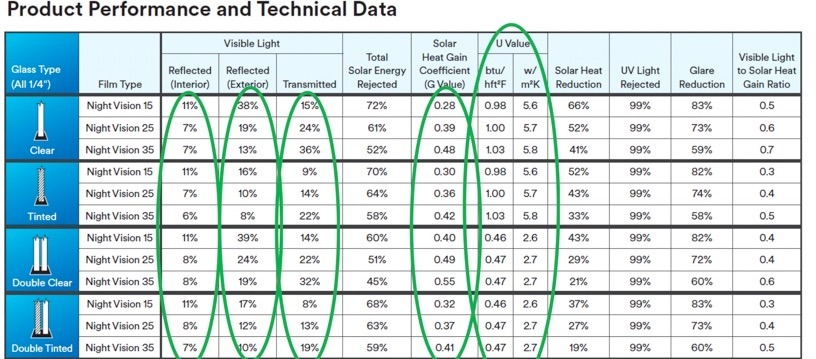
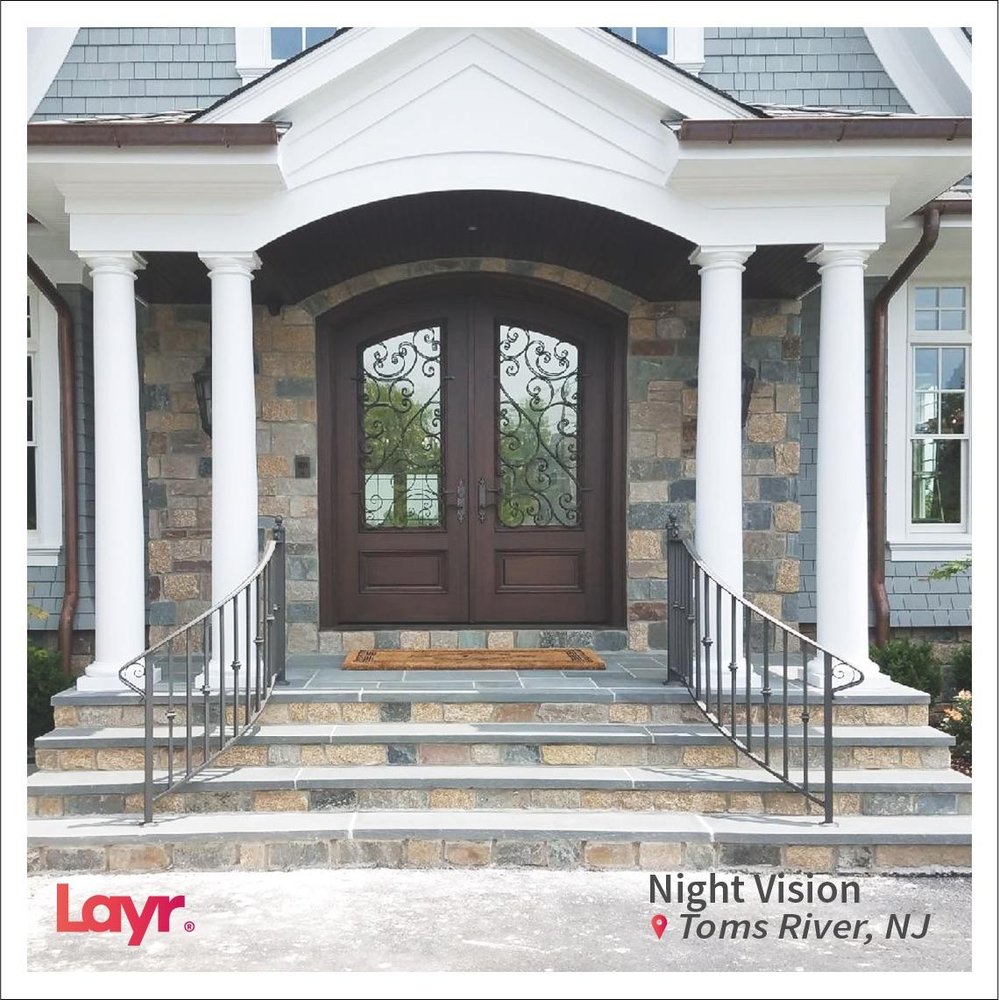
3M Prestige (Non-Reflective):

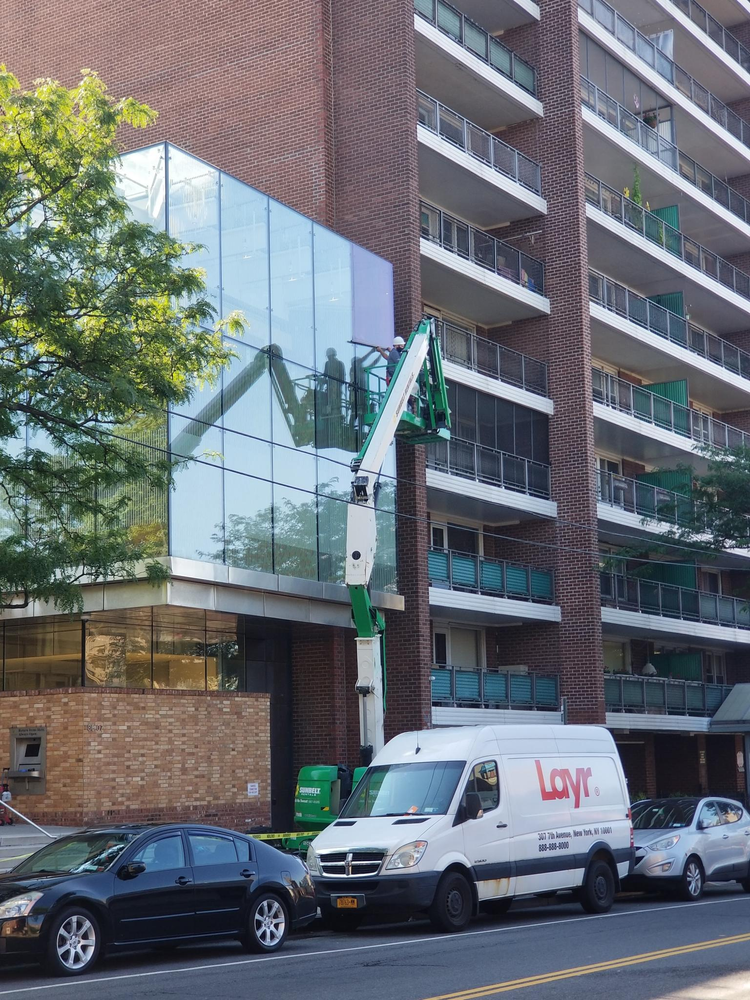
3M Thinsulate (Non-Reflective, Insulating):
